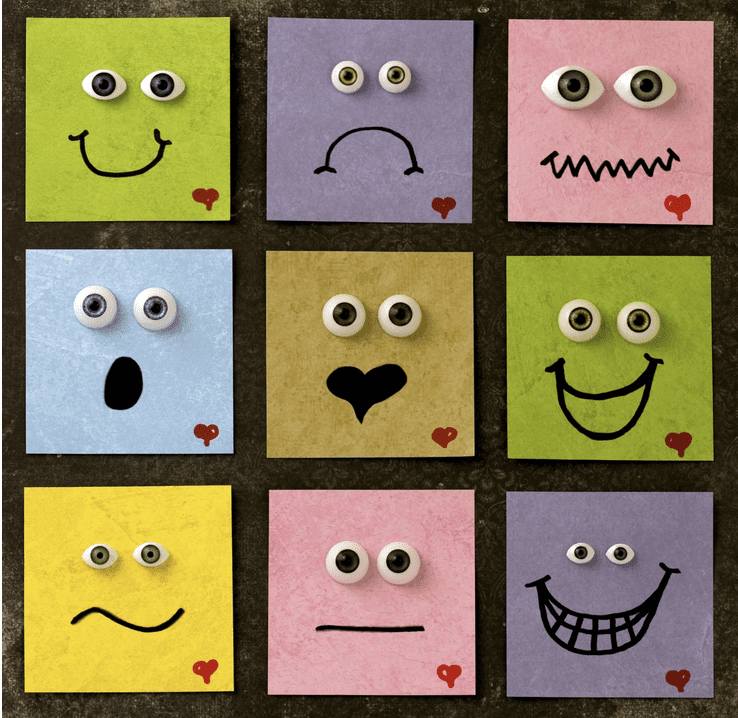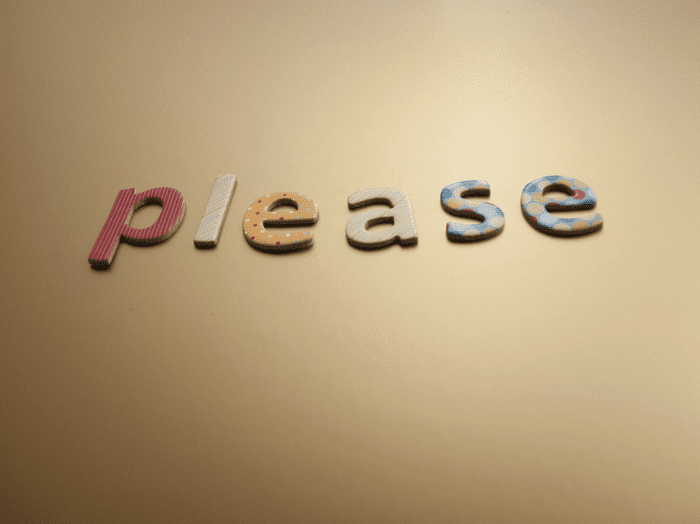Mastering the DBT Skill: Emotion Regulation
Do you ever feel like you’re on an emotional rollercoaster that just won’t stop?

Dialectical Behavior Therapy (or DBT), is a type of evidence based cognitive behavioral therapy designed originally for those suffering from intense emotions, as well as borderline personality disorder. Since its development by psychologist Marsha Linehan in the 1970s and 80s, it has been found to be beneficial treatment for a wide variety of mental health conditions and concerns, including depression, anxiety, PTSD, eating disorders, as well as substance abuse and addiction. DBT centers on four core modules – Mindfulness, Distress Tolerance, Emotion Regulation, and Interpersonal Effectiveness – each offering practical tools for navigating difficult emotions and relationships.
The skill of Mindfulness teaches nonjudgmental, present-moment awareness of thoughts and feelings. Distress Tolerance provides strategies for surviving crises without making things worse. Emotion Regulation equips you with techniques to understand, reduce vulnerability to, and respond adaptively to emotional reactions. Interpersonal Effectiveness builds communication skills for setting boundaries and maintaining healthy connections. Together, these four skill sets empower individuals to experience greater balance, resilience, and purpose. In today’s blog, we will be taking a closer look at the skill Emotion Regulation.

What is Emotion Regulation?
Emotion regulation is the ability to recognize, manage, and respond to your emotions in a healthy and effective way. It involves being aware of what you’re feeling, understanding why you’re feeling it, and then choosing how you want to react, instead of just reacting automatically.
Good emotion regulation means you can:
-Stay calm under stress
-Express feelings appropriately (not bottling them up for lashing out)
-Shift out of intense emotions when needed
-Use strategies to cope with tough feelings like sadness, anger, fear, or frustration.
It’s not about ignoring or suppressing emotions, but instead it is about working with them, so they don’t control your behavior or overwhelm you. Emotional regulation skills are important for mental health, relationships, work, and overall life satisfaction.
In DBT, Emotion Regulation is about learning to:
- Understand and label your emotions
- Reduce emotional vulnerability (so you aren’t at the mercy of every mood swing)
- Decrease emotional suffering (when painful emotions inevitably happen)

Why is Emotional Regulation Important? Or, John’s shortcut to “Calm”
John was a project manager juggling tight deadlines, family dinners, and a side gig teaching yoga. Every time stress spiked, he told himself a glass of wine would help him “reset.” What started as a nightly pour soon crept into afternoons whenever an email from his boss landed in his inbox. Without emotion regulation skills to notice and process his frustration, John leaned on alcohol to dull the noise. Before long he was showing up late, missing important details, and slipping into defensive arguments with his partner. His department flagged his performance, and he ended up on a forced leave to address a small DUI charge. John’s quick fix became his undoing; proving that when we don’t learn healthy ways to handle our feelings, we risk losing far more than a peaceful state of mind.

Without emotion regulation skills, you might find yourself:
- Acting impulsively when upset
- Avoiding situations that trigger uncomfortable emotions
- Feeling stuck in cycles of shame, anger, fear, or sadness
- Turning to unhealthy coping mechanisms, such as substances or compulsive behavior, to manage emotions
Emotions are important signals that tell us about our needs, values, and environment. But when emotions get too intense or hang around longer than necessary, they can cloud our judgement and harm our relationships. Learning to regulate emotions allows you to stay in control without losing the valuable information emotions provide.
How could things have turned out differently for John if he had used the skill of emotion regulation?
Core Skills of Emotion Regulation
Here are a few key strategies DBT teaches under the Emotion Regulation umbrella:
1. Identify and Name Emotions
It sounds simple but being able to accurately say “I feel anxious”, versus “I feel angry” gives you clarity. When you name your emotions, you can better figure out what you need.
In John’s story, he could have caught himself before reaching for that wine by simply pausing and tuning into what he was actually feeling. When the tension spiked, say, after a tough client call, he might have stopped, taken a breath, and asked, “What’s happening inside me right now?” By putting a name to his experience (“I’m feeling overwhelmed and a bit resentful”), John creates just enough distance to choose a healthier response. Once he labels the emotion, he can follow up with a quick journal note or even a private verbal check-in (“Overwhelmed by deadlines”) to acknowledge it. Naming his feelings wouldn’t have magically erased the stress, but it would have given him space to decide against the automatic glass of wine and instead try a mindful breathing exercise, a short walk, or reach out to a friend for support.
*Identifying and Naming Emotions Tip*
Use an emotions list or feeling wheel to expand your emotional vocabulary.

2. Check the Facts
Often, emotions arise based on assumptions rather than facts. For example, you might feel rejected if someone doesn’t text back, but maybe they just lost their phone. Checking the facts can help you determine whether the emotion fits the situation.
Ask:
What are the facts?
Is there another possible explanation?
John could have used “check the facts” the moment he felt the urge to pour that extra glass. Instead of automatically believing “I need wine to calm down,” he would pause and ask himself: What do I actually know? For example, he might notice that while deadlines are tight, there’s no evidence his work quality will suddenly collapse if he takes a five-minute break. He could list objective facts (“I’ve hit every deadline so far this quarter,” “my partner hasn’t complained today”) versus his emotion-fueled interpretations (“I’m about to ruin my career”). Seeing that the facts don’t support an emergency, John gains space to choose a healthier response. This simple fact-checking exercise breaks the cycle of automatic coping and keeps him on track.
*Check the Facts Tip*
Next time you feel swept up in a strong emotion, pause for just ten seconds and write down two lists. On one side, three concrete facts about what’s happening (for example, “My boss emailed at 4 PM,” “I met every deadline this week,” “I haven’t heard any complaints”) and on the other side, three thoughts or worries you’re having (“I’m about to get fired,” “I’m never good enough,” etc.). Comparing the columns helps you spot when you’re reacting to a story in your head rather than reality. And that little reality check is often all you need to choose a healthier response.

3. Opposite Actions
When your emotion urges you to act in a way that’s harmful or unhelpful, DBT teaches Opposite Action: doing the opposite of what your emotion is pushing you to do (if your emotion doesn’t fit the facts).
Feeling scared? Approach what you fear
Feeling angry but no real injustice occurred? Try being kind or walking away
John’s urge to pour another glass of wine was a clear signal that he was leaning into avoidance. Using the opposite action skill, he’d first notice that impulse (“I really want to drink to blot out this stress”), then choose a behavior that directly contradicts it. For example, instead of retreating to the wine glass, he might go for a brisk walk outside, call a friend, or even blast his favorite energizing song and dance around the kitchen. By deliberately “acting opposite” to his emotional urge, John not only interrupts the automatic coping loop but also builds proof that he can feel strong emotions without resorting to alcohol. Over time, those opposite actions become healthier habits that actually reduce his stress rather than mask it.
*Opposite Action Tip*
Whenever you notice the urge to withdraw or numb out, say, scrolling endlessly on your phone to avoid stress, pick a tiny opposite action instead. For example, set a two-minute timer and jot down one thing you’re proud of today. That small flip not only breaks the automatic loop but also reminds you that you can face emotions head-on.

4. Build Positive Emotional Experiences
DBT encourages you to create small, positive experiences every day. This builds a buffer against emotional storms.
Schedule pleasant activities
Practice gratitude
Do things that align with your values
John could have intentionally infused his week with small wins that sparked genuine joy. That’s the “build positive emotional experiences” skill in action. For instance, he might block off thirty minutes on Friday afternoon to try a new yoga flow or sign up for a weekend pottery class he’s been curious about. He could start a quick “win board” by jotting one thing that felt good each day, like nailing a presentation slide or savoring a sunset walk, and place those sticky notes where he sees them each morning. Over time, these planned moments of pleasure and achievement would tip his emotional balance toward optimism, making stress feel less overwhelming and reducing the temptation to drown it in a glass of wine. By proactively stacking positive experiences, John rewires his brain to look for healthier sources of calm and satisfaction.
*Build Positive Emotional Experiences Tip”
Pick one small pleasure, like a two-minute stretch, blasting your favorite song, or savoring a cup of tea, and set an alarm for it in your calendar. When it rings, drop everything and do it. Those mini-joys add up fast and tip your emotional scale toward positivity.

5. Reduce Emotional Vulnerability: PLEASE Skills
DBT uses the acronym PLEASE to remind you to take care of your physical health because physical depletion makes emotional regulation harder.
PhysicaL illness: treat it
Eating: balanced, not too much or too little
Avoid mood-altering substances
Sleep: get enough
Exercise: regularly
John’s stress wasn’t just in his head. It was wearing on his body too. By using the PLEASE skills, John could have nipped his overwhelm in the bud and avoided leaning on wine. He might start by treating physical illness: booking that overdue dentist check-up or seeing his doctor about lingering back pain so his body feels cared for. Next, balanced eating: swapping the late-night pizza binge for a nutrient-packed smoothie or a colorful salad to stabilize his mood. Avoiding mood-altering substances is part of the acronym too, so instead of pouring another glass of wine, he’d stick to water or herbal tea when emotions run high. Balancing sleep means setting a consistent bedtime: maybe turning off screens an hour earlier and winding down with a few minutes of gentle stretching. Finally, exercise: even a ten-minute walk or a quick yoga flow between meetings would flood his system with endorphins and give him real relief. By tending to his physical needs first, John would build a strong foundation that makes emotional ups and downs easier to manage, and leave the wine glass firmly in the cupboard.
*PLEASE Skills Tip*
When you feel overwhelmed, pause and ask yourself, “Which PLEASE skill am I missing: hydration, balanced eating, sleep, exercise, or avoiding substances?” Then pick one need and act on it within five minutes (drink a glass of water, grab a healthy snack, take a short walk, etc.) to support your body and calm your emotions.
How to Start Practicing Emotion Regulation Today
You don’t have to master every skill at once. A good starting point is:
- Track your emotions for a week and notice patterns
- Practice naming what you feel without judgement
- Pick one tool, like check facts or Opposite Action, to use when emotions get intense
Over time, your emotional world will feel less chaotic and more understandable, like you’re in the driver’s seat instead of clinging to the roof of a runaway car!
Final Thoughts
Whether you’re struggling with intense emotions, relationship challenges, or simply want to better understand yourself, mastering DBT skills of Emotion Regulation is a life changing investment in your emotional health
At Williamsville Wellness, we bring the DBT emotion regulation module to life with a personalized touch. Each patient works one-on-one with a dedicated therapist who helps you identify, understand, and reshape intense feelings. You’ll build skills in a supportive environment that includes access to our on-site gym for movement breaks, telehealth options for comfort and convenience, and holistic therapies to reinforce balance. Our team guides you through labeling emotions, checking the facts, practicing opposite actions, and strengthening your body’s resilience with PLEASE strategies. Ready to take control of your emotional ups and downs? Call Williamsville Wellness today at 804-531-3325 to start mastering emotion regulation with expert support.



